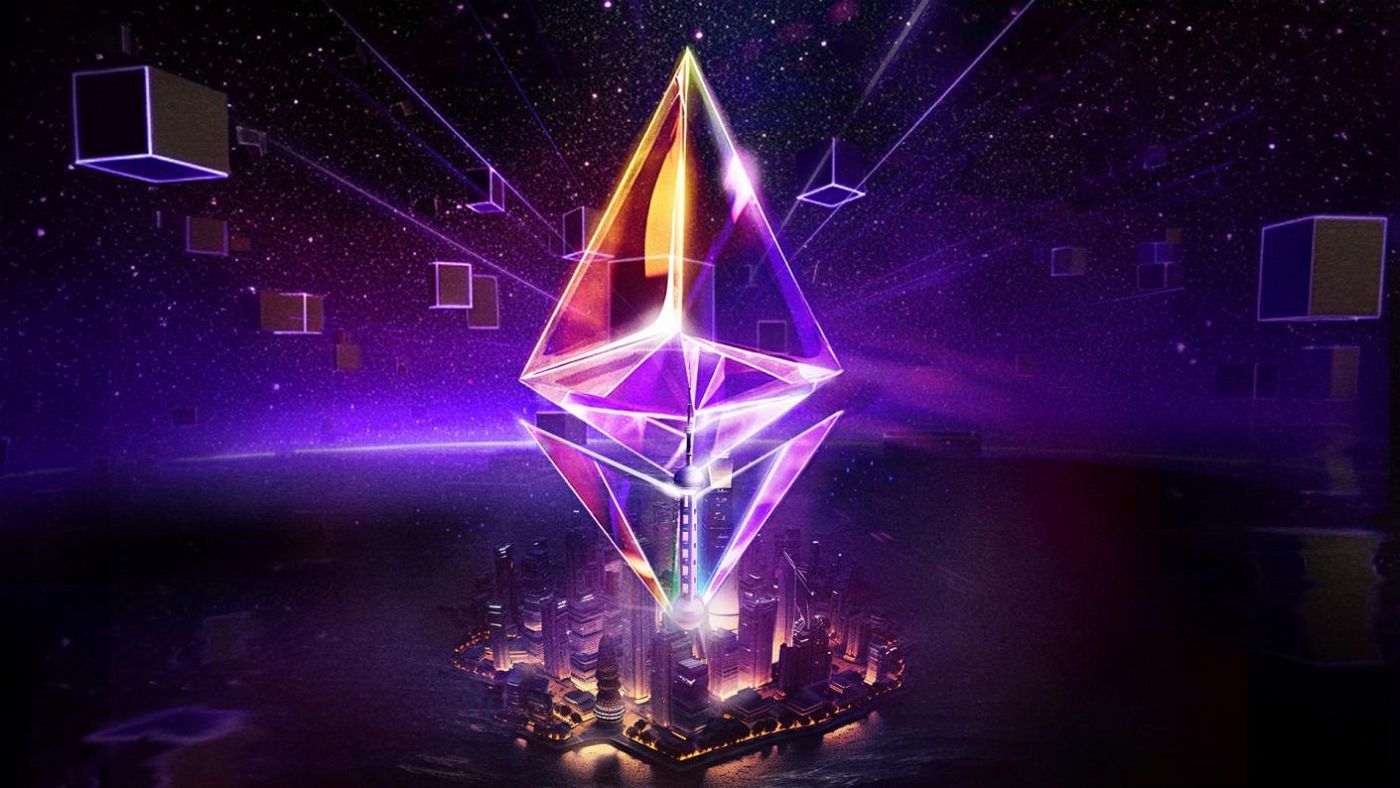
Dear Bankless Nation,
I’m sure you’ve heard, but it’s a big week for Ethereum.
In today’s newsletter, we dig into the details of the Shanghai + Capella upgrades going live on the network tomorrow.
– Bankless team
Bankless Writers: Ben Giove and Jack Inabinet
It’s Shapella szn!
Years in the making, one of the most anticipated network upgrades in Ethereum’s history is here, with the Shapella upgrade set to go live around 6:00 pm EST tomorrow!
Shapella represents the final milestone in Ethereum’s multi-year transition from Proof-Of-Work (PoW) to Proof-Of-Stake (PoS) consensus. It will enable Ethereum stakers/validators to withdraw their deposits from the Beacon Chain.
The upgrade has significant implications for ETH and the staking landscape. As a result there’s been a torrent of discussion, threads, opinions (and misinformation) around the impact of the event.
It’s easy to get lost in the noise – But we’re here to help you cut through it. You’ve got questions, we’ve got answers. Here’s everything you need to know about Shapella.
1. Shapella? Wasn’t this called Shanghai?
Yes, the community initially rallied around the “Shanghai” moniker for withdrawals. But the more technically correct “Shapella” designation has found a home in crypto vernacular as of late.
Shapella = Shanghai + Capella, with the new term referring to the implementation of the change that is occurring at both the network’s execution and consensus layers. At the execution layer, Shanghai will create a new transaction type that will allow stakers to withdraw validator balances, while at the consensus layer, Capella will enable the Beacon Chain to accept a withdrawal request.
Together, the two will imbue stakers with the ability to withdraw their deposits for the first time in Ethereum’s history.
2. Why is there so much hype around Shapella?
Shapella marks the completion of Ethereum’s transition to PoS.
The first step was the “Merge”, which saw the merging of the Beacon Chain launched in December 2020, with the old PoW Ethereum chain. It went off without a hitch in September 2022. However, until this point, staking has been a one way street. Holders could deposit their ETH into the Beacon Chain and earn rewards, but could not withdraw any funds.
Liquid staking derivatives (LSDs) like those from Lido Finance and Rocketpool partially mitigated this illiquidity, by providing liquidity for stakers through the issuance of tradable derivative tokens that represent a claim on their deposit.
However, the ETH stake rate sits at just 14.9%. This is well below the 60.1% average for the top 20 PoS networks, and can likely be attributable in large part to both the technical and liquidity risks that currently exist with pre-Shapella ETH staking. This is why many believe that Shapella de-risks ETH staking, with withdrawals enabling an exit for stakers. As a result, it’s likely that Ethereum will undergo a “staking super cycle,” which refers to a surge in staking deposits that takes its stake rate closer to the mean.
This expected staking boom has also helped fuel the enthusiasm around LSDs, which are expected to be one of the primary beneficiaries of this growth (more on that later).
3. Will I have to change how I use Ethereum?
Nope! Ethereum users aren’t impacted by the implementation of Shapella, and will be able to transact as they always would. The one difference, of course, will be if you are a solo staker and/or validator. If you are a part of one of those groups you will be able to begin the process of claiming rewards and withdrawing your stake, should you choose to do so (more on that below, too).
4. How do withdrawals work? How much ETH can be withdrawn?
There is currently more than 18.2M ETH (~576,000 validators) deposited on the Beacon Chain, with an additional 1M of ETH rewards having accrued since staking went live.
These two cohorts of ETH have different withdrawal processes. Validator exits (i.e. the 18.2M) undergo a full withdrawal process. Accrued rewards on the other hand, termed partial withdrawals, are eligible for expedited clearing.
Full-withdrawals have to go through two queues, withdrawal and exit, which serve as a delay for when a staker signals their intention to withdraw their deposit to when it becomes fully liquid. There is some validator math that goes into calculating this figure, but about 57,000 ETH will become eligible to be withdrawn daily via full withdrawals immediately after Shapella goes live. In the first 54 days following the upgrade, as much as 3.3M ETH can move to exit the Beacon Chain.
Partial-withdrawals (i.e. staking rewards) get to bypass these queues, and can become liquid near-instantaneously. Per our analysis, it will take about 4.75 days post-Shapella for this ETH to be withdrawn and liquid.
5. Will ETH dump after Shapella?
That’s the $230 billion question!
As discussed above, the 1M ETH ($1.9B) in accrued staking rewards will become eligible to be withdrawn within 5 days post-Shapella. This represents the first significant chunk of staked ETH supply to hit the open-market, and it’s likely that some portion of this will be sold. If all of it were sold, it would account for about 12% of the ETH’s daily trading volumes. However, the probability of this scenario occurring is very low, as many validators will choose to re-stake within a different venue.
After this, factoring in queues and a 27-hour delay after Shapella’s implementation, an estimated 3.3M ETH (worth $6.3B at current prices) will become eligible to be withdrawn in the first 54 days post-upgrade. We don’t know how much of this will be withdrawn and sold, though we’ll be able to monitor these staking flows in real time. But ultimately, this author believes that the impact of Shanghai on the price of ETH in the short-term to be minimal. I expect the vast majority of staked ETH will not be withdrawn. For the ETH that is withdrawn, a significant portion will be re-staked, rather than sold.
Furthermore, in the medium to long-term, Shanghai is a “bullish unlock”, as it should lead to more ETH being bought and staked. So far, so good for the bulls – as ETH has rallied 6.1% in the week leading into the news. We’ll see if it continues to hold up.
6. What happens to Liquid Staking Derivatives (LSDs)?
Just like transactors, LSD holders will not be largely impacted by Shapella.
While some have speculated that there may be changes in their liquidity and potential volatility in their price relative to ETH (i.e. trading above or below 1:1), LSDs will still be freely tradable for other ERC-20s and can continue to be deployed in supported DeFi protocols.
LSDs like stETH, rETH, frxETH, and sETH2 will still represent a 1:1 claim on an ETH deposit into their respective protocols. However, not all LSD issuers will initially support withdrawals. For instance, Lido, the largest staking entity on the Beacon Chain with 31.3% market share, will not support stETH withdrawals until “around mid-May” due to pending audits.
7. How will LSD governance tokens perform?
LSD governance tokens have been among the best performing assets of 2023, with Lido (LDO), Rocket Pool (RPL), and Frax (FXS), soaring between 103-135% against USD and 17-37% against ETH year-to-date.
Much of this outperformance has been in anticipation of Shapella, with traders expecting the upgrade to catalyze an influx in deposits into liquid staking protocols.
Will this be a “sell the news” event for LSD governance tokens? Or will they continue their outperformance?
If you’re interested in hearing the Bankless take on how tokens like LDO, RPL, FXS, SWISE and others will perform, we’ll have some updates to share with you later this week, but to read them you’ll need to be a Bankless Citizen!
Got More Questions?
This is a big event, and there’s a lot going on – if you still have questions, ask us directly in the ‘Questions from the Nation’ segment of the Weekly Rollup podcast!
Every Wednesday at 12PM EST, a tweet comes out of the @BanklessHQ Twitter account, asking for questions – we pick the best ones and answer them every week on the podcast!
Action steps
Read More: www.bankless.com









 Bitcoin
Bitcoin  Ethereum
Ethereum  Tether
Tether  XRP
XRP  Solana
Solana  USDC
USDC  Dogecoin
Dogecoin  Cardano
Cardano  TRON
TRON  Lido Staked Ether
Lido Staked Ether  Wrapped Bitcoin
Wrapped Bitcoin  Sui
Sui  Chainlink
Chainlink  Avalanche
Avalanche  LEO Token
LEO Token  Stellar
Stellar  Toncoin
Toncoin  USDS
USDS  Wrapped stETH
Wrapped stETH  Hedera
Hedera  Shiba Inu
Shiba Inu  Bitcoin Cash
Bitcoin Cash  Hyperliquid
Hyperliquid  Litecoin
Litecoin  Polkadot
Polkadot  Monero
Monero  Binance Bridged USDT (BNB Smart Chain)
Binance Bridged USDT (BNB Smart Chain)  WETH
WETH  Bitget Token
Bitget Token  Ethena USDe
Ethena USDe  Coinbase Wrapped BTC
Coinbase Wrapped BTC  Pi Network
Pi Network  WhiteBIT Coin
WhiteBIT Coin  Wrapped eETH
Wrapped eETH  Pepe
Pepe  Dai
Dai  Bittensor
Bittensor  OKB
OKB  Uniswap
Uniswap  Aptos
Aptos  BlackRock USD Institutional Digital Liquidity Fund
BlackRock USD Institutional Digital Liquidity Fund  sUSDS
sUSDS  NEAR Protocol
NEAR Protocol  Ondo
Ondo  Aave
Aave  Gate
Gate  Cronos
Cronos  Internet Computer
Internet Computer  Ethereum Classic
Ethereum Classic